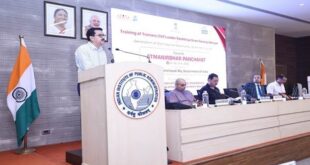- Recently, the International Labour Organisation (ILO) released a report titled World Employment and Social Outlook – Trends (WESO Trends) 2022.
- The Outlook remains fragile because the future path of the pandemic remains uncertain.
- The WESO Trends includes comprehensive labour market projections for 2022 and 2023. It gives assessments of how labour market recovery has unfolded worldwide, reflecting different national approaches to pandemic recovery and analysing the effects on different groups of workers and economic sectors.
Important points:
- Global unemployment is expected to remain above pre-Covid-19 levels until at least 2023.
- The 2022 level is estimated at 207 million, compared to 186 million in 2019.
- In 2022, it will be almost 2% below their pre-pandemic level — that is equivalent to the loss of 52 million full-time jobs. This deficit is twice as large as the ILO’s forecast in 2021.
- It is estimated that in 2022 around 40 million people will no longer be participating in the global labour force.
- The impact has been particularly serious for developing nations that experienced higher levels of inequality, more divergent working conditions and weaker social protection systems even before the pandemic.
- Many low and middle-income countries have low access to vaccines and limited scope to expand government budgets to address the crisis.
- The report warns of stark differences in the impact that the crisis is having across groups of workers and countries – deepening inequalities within and among nations – while weakening the economic, financial and social fabric of almost every State, regardless of development status.
- The damage is likely to require years to repair, with potential long-term consequences for labour forces, household incomes, and social and possibly political cohesion.
- Some sectors, such as travel and tourism have been particularly hard hit, while other sectors such as those related to information technology have thrived.
- Women have been worse hit by the labour market crisis than men and this is likely to continue.
- The closing of education and training institutions will have long-term implications for young people, particularly those without internet access.
- There can be no real recovery from this pandemic without a broad-based labour market recovery.
- Sustainable recovery is possible, but it must be based on the principles of decent work, including health and safety, equity, social protection, and social dialogue.
- The new labour market forecast can be vital for policy planning for a country like India, where most of the work is informal, to prevent further employment losses and reductions in working hours.
SOURCE: THE HINDU,THE ECONOMIC TIMES,MINT
 Chinmaya IAS Academy – Current Affairs Chinmaya IAS Academy – Current Affairs
Chinmaya IAS Academy – Current Affairs Chinmaya IAS Academy – Current Affairs



